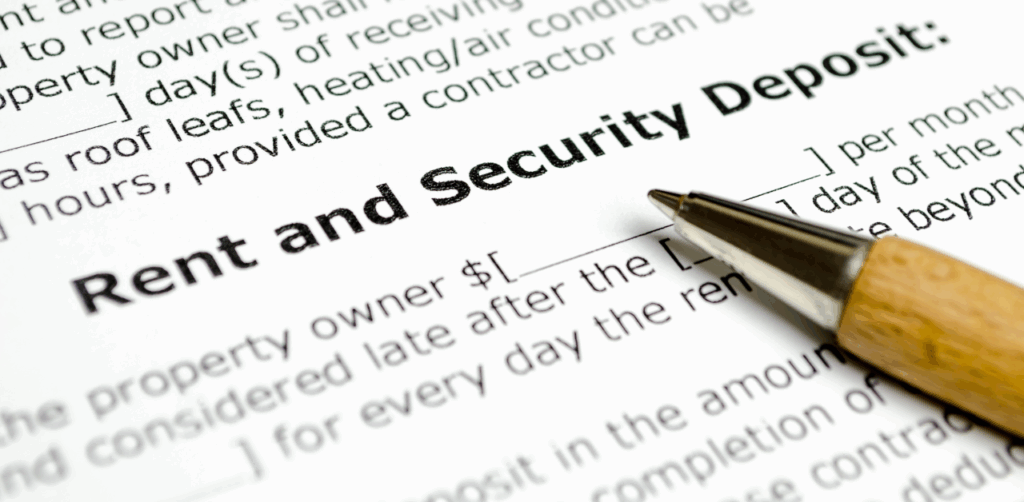
When you own a rental property, dealing with problem tenants is a part of the rental business. One of the most frustrating and costly issues a landlord faces is when a tenant damages the property. It’s natural to feel stressed or angry when a tenant destroys property, but reacting emotionally can complicate things. You need to know exactly what to do if a tenant damages your rental property to protect your investment and ensure your rights are upheld.
At Faranesh Real Estate and Property Management, we understand the stress and financial impact that tenant property damage can have on a property owner. We help our clients manage these difficult situations by providing expert guidance on everything from initial damage assessment to pursuing legal remedies. Protecting your assets is our top priority.
Distinguishing Tenant Damages, Negligence, and Normal Wear and Tear
Before you take any action, you must accurately assess property damage. Landlords often struggle to distinguish between normal wear and tear and damage caused by the tenant. This distinction is critical because it determines your right to use the tenant’s security deposit or charge the tenant for repair costs.
Defining Normal Wear and Tear vs. Tenant-Caused Damage
Normal wear and tear refers to the natural and unavoidable deterioration that happens over time with ordinary use. Examples include faded paint, minor scuff marks on walls, loose door handles, or worn carpet. You, the property owner, are responsible for covering the costs of this deterioration.
Tenant-caused damage, on the other hand, is the destruction or deterioration of the rental property that results from tenant negligence, carelessness, abuse, or accident. This is what you can legally charge tenants for. Examples of tenant damages include:
- Holes punched in walls
- Broken appliances from misuse
- Massive stains on the carpet
- Broken windows or doors
- Unapproved modifications
In severe cases, you might face a situation where the tenant destroys a significant part of the unit. Your first step is to document that the tenant’s damage to the property is not normal wear but rather intentional or negligent destruction.
The Critical Role of Documentation and Detailed Records
Your ability to seek financial repayment from the tenant or their security deposit hinges on your documentation. You need detailed records of the property’s condition before the tenant moved in (a move-out inspection record, photos, and videos) and immediately after you discover the damage.
- Take Photos and Videos: Get high-quality, timestamped evidence of all property damage.
- Create an Itemized List: Detail every damaged item, the extent of the damage, and provide an estimate of the repair costs.
- Get Repair Estimates: Secure at least two professional repair estimates from contractors to establish a reasonable cost for the necessary work.
This comprehensive documentation is your supporting proof for any claim against the tenant’s security deposit or if you need to pursue legal action.
Utilizing the Tenant’s Security Deposit and Seeking Compensation When Damage Exceeds the Security Deposit Amount

One of the most immediate and common remedies available to a landlord is the security deposit. The deposit is explicitly held to cover unpaid rent and tenant property damage beyond normal wear and tear.
Once you have assessed the damage and have your repair estimates, you can begin deducting repair costs from the tenant’s security deposit. However, you must follow the letter of the law. Local laws dictate the specific timeframe and method for notifying the tenant and providing an accounting.
You must provide the tenant with a written, itemized list of the damages and the associated costs deducted from the deposit. If the full deposit covers the repairs, you must return any remaining portion to the tenant within the legally mandated period.
When Damage Exceeds the Security Deposit
In situations involving significant property damage, where the cost to repair or replace items exceeds the initial security deposit amount, your options shift. If the damage exceeds the deposit, you must seek financial repayment for the additional costs directly from the tenant.
At this point, you should send the tenant a formal written demand for the remaining amount. This demand should include:
- Detailed records
- Itemized list of damages
- Repair estimates
You can offer the tenant a structured payment plan as an initial, good-faith attempt to recover the funds without further legal action.
Noncompliance and Refusal: When the Tenant Refuses to Pay or the Tenant Moves Out
If a noncompliant tenant fails to pay the outstanding balance or if the tenant moves out owing money, you must escalate your approach. You may need to pursue legal action. For amounts typically under a state-specified limit (which varies by jurisdiction), the most cost-effective and straightforward path is small claims court.
- File a Claim: File a civil suit in small claims court to seek compensation for the unpaid repair costs and potentially other fees.
- Gather Supporting Documentation: Your meticulous records of the damage, repair costs, and correspondence with the tenant will be crucial evidence.
- Cost-Benefit Analysis: Before filing, conduct a cost-benefit analysis. Weigh the time, effort, and filing fees against the likelihood of collecting the judgment, especially if the tenant has moved out of state or has few verifiable assets.
Another option is to sell the debt to a debt collector or hire a collections agency. These third parties specialize in recovering unpaid funds. This method can save you the time and effort of going to small claims court, but the agency will take a significant percentage of the recovered funds.
Initiating Eviction Proceedings for Ongoing Damage
If you discover the property destruction while the tenant is still living in the unit, you may have grounds for initiating eviction proceedings. Most lease agreement terms include a clause that allows a landlord to terminate the rental agreement if the tenant significantly violates the lease, such as by causing property damage.
You must follow proper procedures for eviction, which typically begin by serving the tenant a formal notice to cure or quit (requiring the tenant to repair the damage or vacate the unit) or an unconditional quit notice, depending on local laws and the severity of the damage.
For our clients, Faranesh Real Estate and Property Management handles this delicate process, ensuring that the eviction proceedings are compliant and swift.
Role of Insurance and Police in Severe Property Destruction Cases

For severe cases of property damage, especially those involving vandalism or criminal activity, you may need to involve your insurance provider and, in some cases, the local police. Your landlord insurance policy is there to protect you against catastrophic losses. If the property damage is extensive and costly, it’s time to talk to your insurance agent.
If you believe the damage was caused by a crime in which a tenant destroys property with clear intent, you should file a police report. This includes:
- Vandalism
- Arson
- Malicious destruction
A police report can be crucial for an insurance claim, as insurers often require one for claims related to criminal damage. Furthermore, it creates a public record of the event, which may support your case if you later decide to pursue legal consequences against the tenant.
Future-Proofing Your Rental Business: Preventive Measures and Tenant Screening
The best defense against tenant damage is prevention. A strong rental business relies on a solid foundation, which includes a comprehensive lease and robust tenant screening. A comprehensive lease agreement is your primary defense. Against potential disputes, it must clearly outline the tenant’s responsibility for property maintenance and all forms of damage caused by the tenant. This should cover the following details:
- Define Damages: Clearly define what constitutes damage beyond normal wear and tear, and specify that the tenant will be responsible for the full cost of repairs.
- Specify Security Deposit Use: Detail how the security deposit can be used, including covering costs incurred when a tenant damages or destroys the unit.
- State Legal Consequences: Clearly outline the legal rights of the landlord and the legal consequences for the tenant, including eviction proceedings and liability for amounts that damage exceed the security deposit amount.
Faranesh Real Estate and Property Management’s Strategy in Cases of Tenant Damaging Property
Ultimately, knowing what to do if a tenant damages your rental property boils down to being prepared, maintaining detailed documentation, and being willing to enforce your landlord rights fully. When dealing with a difficult situation where a tenant destroys property or causes extensive damage, the support of a reliable property management partner can make all the difference.
We often hear from clients who appreciate the peace of mind our comprehensive services provide. Brandi Kjose shared this about her experience:
I have partnered with Faranesh Real Estate and Property Management for several years now to manage my rental homes. This company is nothing short of FANTASTIC! Wasim is very responsive to both tenants and landlords. The stress he saves me cannot be measured. His team handles everything and keeps me well informed. I wish I would have found them sooner. 10 stars. HIGHLY recommend!!!!
If you find yourself facing the headache of dealing with a noncompliant tenant or severe tenant damages, let Faranesh Real Estate and Property Management help you. Contact us at (702) 536-9000 to protect your investment and secure the compensation you are entitled to.




